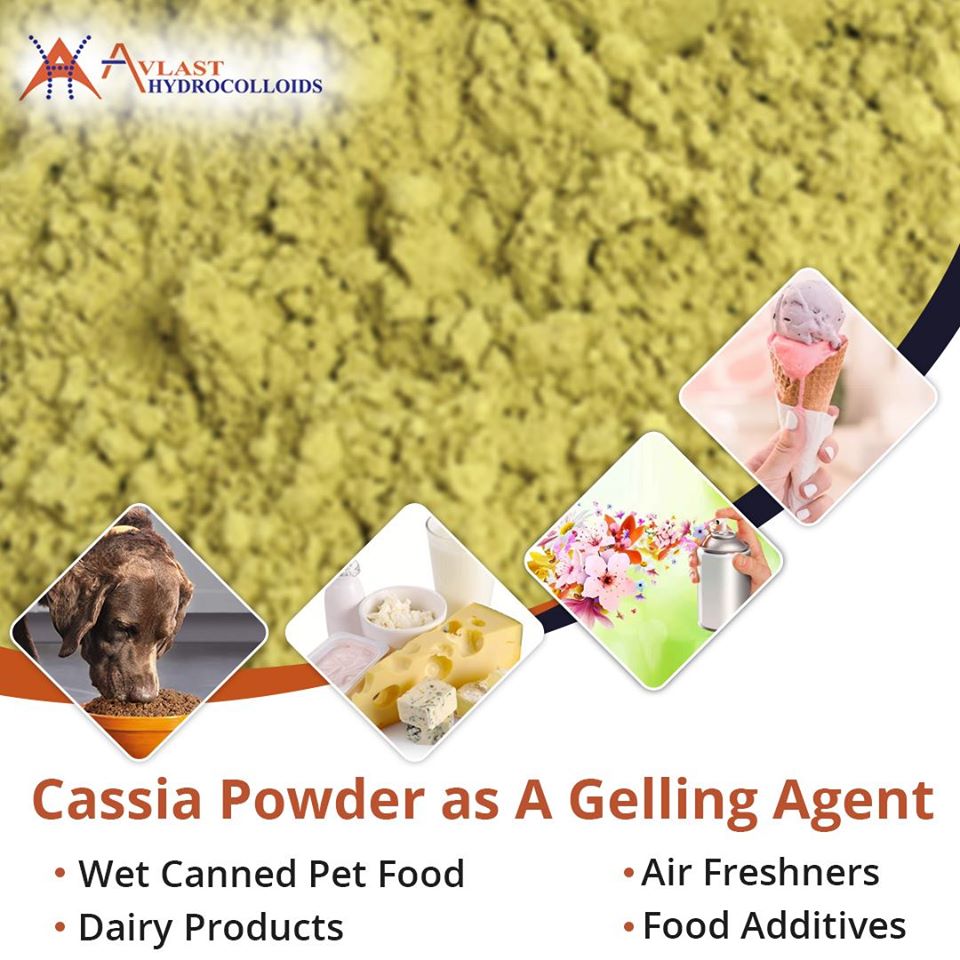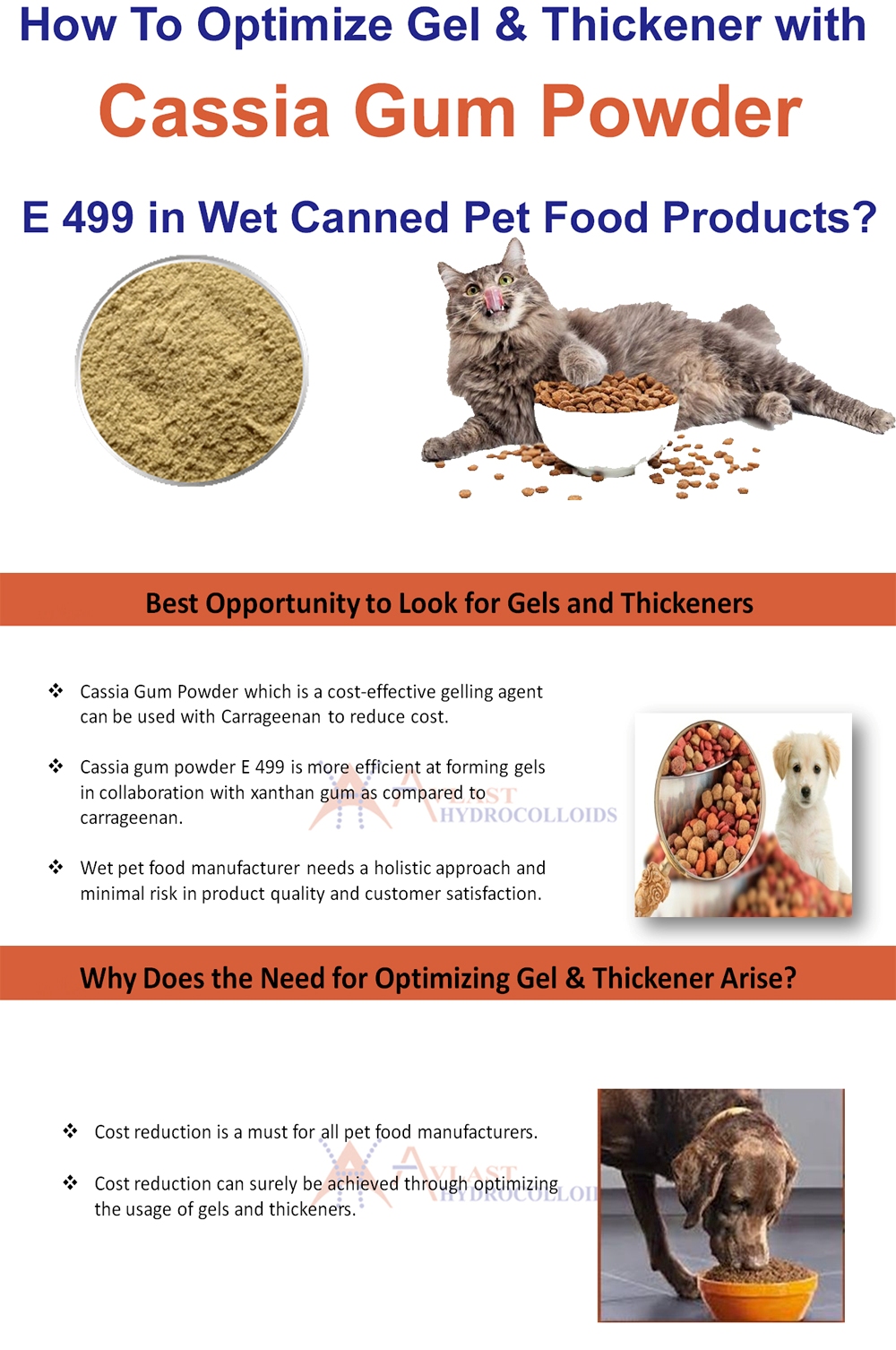How To Optimize Gel & Thickener with Cassia Gum Powder E 499 in Wet Canned Pet Food Products?
There are various hydrocolloids available in the market like Guar Gum, Carrageenan, Xanthan Gum, Cassia Gum, Locust Bean Gum, Gum Arabic, Tamarind Gum, etc. In wet pet food, gels and thickeners fulfill a wide range of process and product roles.
Carrageenan is one of the best gelling agents due to its fantastic properties and it is a natural material. In wet pet food, arguably the synergistic interaction between kappa-carrageenan, it forms a weak, brittle gel in the presence of potassium ions. But with a non-gelling hydrocolloid like cassia gum, to form elastic gels is the most important functionality.
But carrageenan has its own disadvantage like its’s price is very high and it also has many applications. Besides, carrageenan grows in the sea and nowadays the sea temperature in the world keeps on increasing. This affects the growth of commercial seaweed used for manufacturing kappa-carrageenan and gives rise to shortages.
Therefore, optimization of gels and thickeners offers many opportunities in cost reduction, and also brings additional benefits with it like palatability, product quality, and fecal quality.

Best Opportunity to Look for Gels and Thickeners
Cassia Gum Powder which is a cost-effective gelling agent can be used with Carrageenan to reduce cost and improve te gelling system in wet canned pet food.
Cassia gum forms firm, thermoplastic gels with carrageenan. As its amount is increased, the gel strength is also increased. It is stable along with carrageenan gel due to the excellent retorting stability. It does not have the ability to form gels on their own and this fact is the same for xanthan gum. But when cassia gum combined with xanthan gum, their aqueous dispersions form cohesive, elastic gels. Cassia gum powder E 499 is more efficient at forming gels in collaboration with xanthan gum as compared to carrageenan and various other galactomannans. This also enables a lower level of total hydrocolloids formation in the completed formulations which is due to the presence of unique branched polysaccharide mannose/galactose like structure of the cassia gum.
Because of the existence of the lack of fundamental understanding of the gel’s functionality, it is possible to create a completely gelled texture in a chunks-in-gravy format, which might not be what the customer expects!
The wet pet food manufacturer needs a holistic approach and minimal risk in product quality, customer satisfaction, and with their brands but they also need a holistic approach covering the whole supply chain from the raw material vendor.
The above factors can be applied to all types of format of wet pet food, and based on these factors producers can consider cost optimization of thickeners and also minimize and control the risks.
Why Does the Need for Optimizing Gel & Thickener Arise?
Due to competition nowadays, cost reduction is a must for all pet food manufacturers and it can be achieved through optimizing usage of gels and thickeners only.
So, they need to look fora scope if there is any possibility of cost reduction in their wet pet food recipes. But product developers will have to balance many factors like product appearance with texture, digestibility, and quality.
These factors can often limit the scope, but cost reduction can surely be achieved through optimizing the usage of gels and thickeners.


